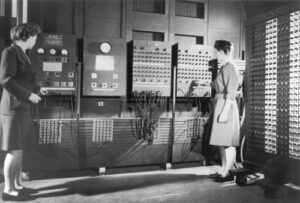Emotion & Design: Attractive things work better
While reading this passage, one of the aspects that piqued my interest was the discussion of the affective system. The affective system seems to awfully relate to utilitarianism in the sense that it judges and classifies aspects of life to binary entities of positive and negative. As utilitarianism is highly contextual and can be proven null based on certain contexts, I believe that affective system can also prove to be useless in certain contexts. There could be scenarios where the affective system judges something to be positive and yet the cognitive system could not make sense of it, which would imply that there are not enough information to make sense of it based on the contextual information alone.
Her Code Got Humans on the Moon—And Invented Software Itself
As a software engineer enthusiast, Margaret Hamilton has always been an idol to me. The way she not only contributed significantly to Apollo, but also paved the way for the present software engineers when she was the minority in the field. As stated by the passage, there have been numerous denials and harsh comments about her regarding her situation as a mother and also the situation regarding the P01 program, but ultimately she have proven many doubters wrong. I distinctly remember the picture of her where she held a stack of papers her height which consisted of her handwritten codes. To be writing such important codes without any IDE s, compilers or helper tools is beyond me.
The nexus between software engineering and design is profound, with user interface and system design serving as pivotal components. Margaret Hamilton’s contributions to Apollo and the broader field of software engineering exemplify this intricate relationship. Her remarkable ability to craft critical code manually, without the aid of modern tools, underscores the fundamental principles of design thinking in software development. This highlights the paramount importance of intertwining technical proficiency with human-centric design considerations to create impactful and user-friendly software solutions.

